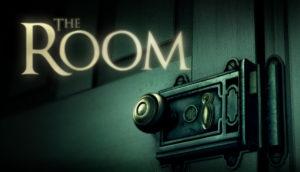
The Room is a 2012 mobile puzzle game developed by Fireproof Games, designed by Robert Dodd and Mark Hamilton, and written by Oliver Reid-Smith. The game’s premise is quite simple: you are presented with a puzzle box that has been left behind by an unknown researcher who is attempting to unlock the secrets of the “fifth element,” “null”. You must try to solve the different built-in puzzles to unlock the box and learn of the researcher’s fate, however you soon find that each box contains a smaller, more intricate one.
Perhaps due to the puzzle-based nature of the game, and thus not containing many narrative themes that could be troubling to players, The Room has a player age of 9+, however I would assume that the target audience would be closer to 12+ given that some of the puzzles require more sophisticated thought and pattern recognition. Furthermore, given that the main type of fun intended seems to be challenge (with a sprinkle of discovery and narrative), the game type and structure seems suited towards slightly older players.
The game’s mechanics are relatively simple: each stage focuses on a single box that the player must unlock, with subsequent boxes nested inside. There are a variety of puzzles built into each box, often making use of object retrieval and interaction, phone controls (tilting), and information input (codes, buttons, etc.). Many of these puzzles require pattern memorization and recognition, spacial reasoning, and decent reflexes, which helps to keep the game engaging. Inevitably, the gameplay can feel somewhat repetitive, however the game does a good job of rotating types of play between levels. Each box begins with one puzzle, which then unlocks further puzzles until that level is beaten and the next box is revealed. For me, the more interesting part of the game is that the player receives a looking glass, through which you can perceive extra information, either in the form of markings left in invisible substances or seeing through false structures to view optical illusions and hidden objects (this is explained by the idea that the lens was created through experiments surrounding “null” and therefore allows one to see secret and mystical things). This mechanic not only forces the player to interact with the game with more curiosity, but weaves nicely into the narrative, such that the number of puzzles requiring the looking glass increase over time and the complexity and other-worldly aspects of what the glass reveals become more and more impressive.
Although I have not finished the game, I have really enjoyed playing it thus far and would definitely recommend it to anyone interested in trying an approachable yet engaging puzzle game!


